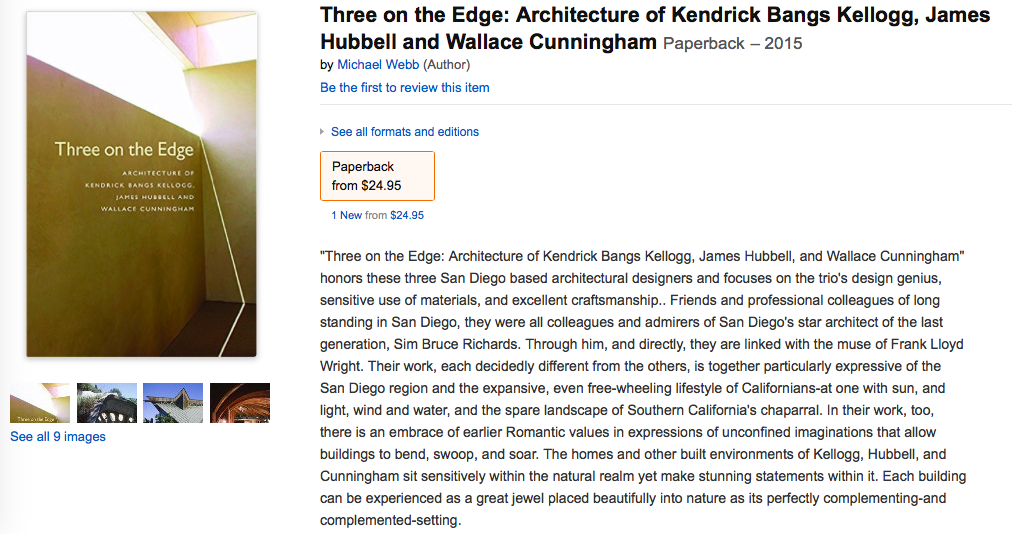Excerpt from "Three on the Edge"
…At age twenty-three, Kellogg designed the Babcock House in South Mission Beach- as startling an apparition among its neighboring cottages as is Rudolph Schindler’s Lovell Beach House on Balboa Island, which was completed thirty years earlier. The Babcocks had originally wanted a house by Wright, but they gave an untested talent a free hand to create his version of an A-frame house. As architect Kay Kaiser has noted in a masterly essay on Kellogg, the house’s soaring wooden prow evokes the architecture of Polynesia- a theme popularized in the late 1940’s by the publication of Thor Heyerdahl’s Kon-tiki Expedition- but there are also echoes of Wright in the repeated triangles, as well as traces of Bruce Goff.
Kellogg cemented his reputation with the von Beck house, also known as the Onion House (1962-63), located on the Kona coast of the Big Island of Hawai’i; it remains one of his most original, site-specific buildings. Recalling his first encounter with this earthly paradise, during the time he was assisting Richards, he took his cues from the native Hapu’u fern and giant clamshell and from platforms used in ancient religious ceremonies. The house is supported by battered lava rock walls. Domes formed from curved, translucent fiberglass panels are crowned with steel spires. Openings pull in fresh breezes and vent hot air for the living areas and master suite. Concrete arches radiate from the fireplaces to support the fiberglass panels, and koa wood is laminated to form a one-hundred-foot arched canopy that ties together the constituent parts of the house. Kellogg designed everything, down to the smallest details, and he built it in just fourteen months with local labor and help from two friends from San Diego: Bill Slatton, who had welded for Wright; and Hubbell, who created twenty-nine stained glass windows for the house. It was an extraordinary achievement for an architect who was still two years shy of his thirtieth birthday.
Kellogg cemented his reputation with the von Beck house, also known as the Onion House (1962-63), located on the Kona coast of the Big Island of Hawai’i; it remains one of his most original, site-specific buildings. Recalling his first encounter with this earthly paradise, during the time he was assisting Richards, he took his cues from the native Hapu’u fern and giant clamshell and from platforms used in ancient religious ceremonies. The house is supported by battered lava rock walls. Domes formed from curved, translucent fiberglass panels are crowned with steel spires. Openings pull in fresh breezes and vent hot air for the living areas and master suite. Concrete arches radiate from the fireplaces to support the fiberglass panels, and koa wood is laminated to form a one-hundred-foot arched canopy that ties together the constituent parts of the house. Kellogg designed everything, down to the smallest details, and he built it in just fourteen months with local labor and help from two friends from San Diego: Bill Slatton, who had welded for Wright; and Hubbell, who created twenty-nine stained glass windows for the house. It was an extraordinary achievement for an architect who was still two years shy of his thirtieth birthday.

